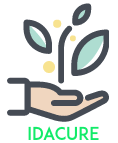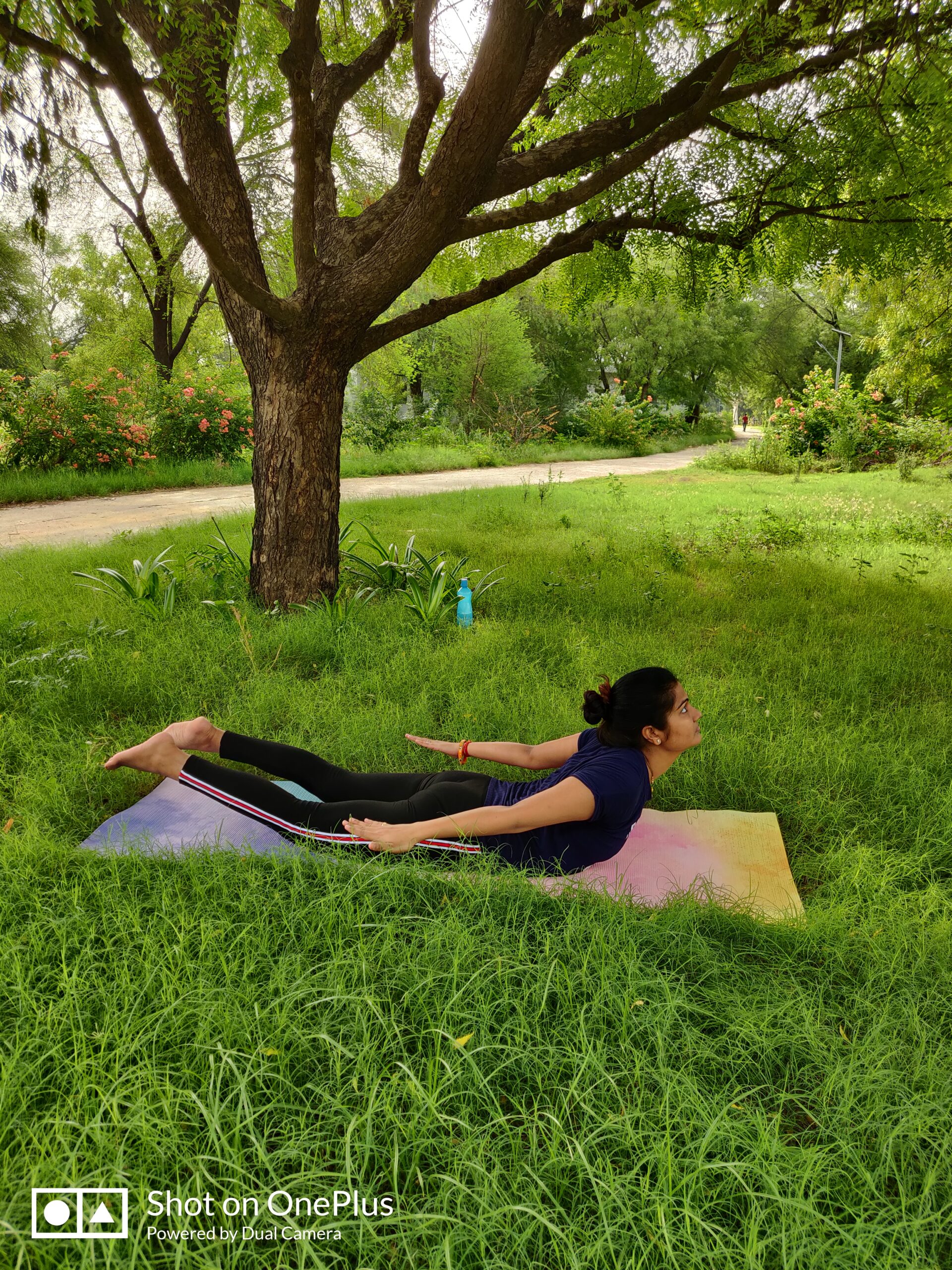Introduction
Low blood pressure, or hypotension, can be just as concerning as high blood pressure, as it often leads to symptoms that impact an individual’s quality of life. While conventional medicine offers treatments for low blood pressure, many individuals seek alternative approaches that align with their holistic health goals. In this comprehensive guide, we will explore Naturopathic management treatments and therapies for low blood pressure, offering unique and effective strategies to address this condition.

Understanding Low Blood Pressure
1 Defining Low Blood Pressure
Low blood pressure occurs when the force of blood against the walls of the arteries is lower than normal. It’s typically defined as having a reading of 90/60 mm Hg or lower.
2 The Importance of Balance
Exploring the significance of maintaining balanced blood pressure for overall health and well-being.
Causes of Low Blood Pressure
1 Dehydration
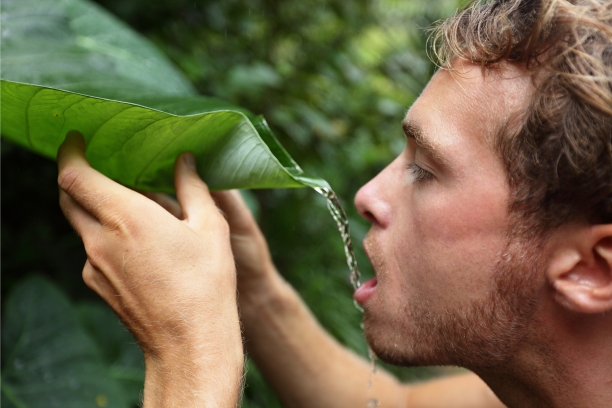
- Exploring how insufficient fluid levels in the body can lead to low blood pressure.
- The importance of staying hydrated for maintaining blood pressure within a healthy range.
2 Medications
- How certain medications, such as antihypertensives, diuretics, and others, can inadvertently lower blood pressure.
- The need for medication management and potential alternatives.
3 Heart Conditions
- Discussing heart problems like bradycardia (slow heart rate) and heart valve disorders that can cause low blood pressure.
- The relationship between heart health and blood pressure regulation.
4 Endocrine Issues
- Investigating endocrine disorders like Addison’s disease and hypothyroidism and their impact on blood pressure.
- The role of hormonal balance in maintaining blood pressure.
5 Nutritional Deficiencies
- How deficiencies in vital nutrients like vitamin B12 and folate can contribute to low blood pressure.
- Dietary considerations for addressing nutritional imbalances.
6 Blood Loss

- Understanding how acute or chronic blood loss, whether from injury, surgery, or gastrointestinal bleeding, can result in low blood pressure.
- The importance of prompt medical attention in cases of significant blood loss.
7 Postural Hypotension
- Defining postural hypotension and its causes.
- Strategies for managing and preventing blood pressure drops upon standing.
Symptoms of Low Blood Pressure

1 Dizziness and Lightheadedness
- Exploring the sensation of feeling dizzy or lightheaded, especially when transitioning from sitting to standing.
- How blood pressure fluctuations can trigger these symptoms.
2 Fainting (Syncope)
- Understanding why fainting episodes can occur with low blood pressure.
- Identifying triggers and warning signs.
3 Fatigue
- The connection between low blood pressure and persistent fatigue.
- Lifestyle changes and therapies to combat low energy levels.
4 Blurred Vision
- Discussing how blood pressure drops can affect vision.
- When to seek medical evaluation for visual disturbances.
5 Difficulty Concentrating
- The cognitive impact of low blood pressure and its effects on concentration and mental clarity.
- Mindfulness and meditation techniques for improving focus.
6 Rapid Heartbeat (Tachycardia)

- Exploring the paradoxical occurrence of a rapid heart rate alongside low blood pressure.
- Strategies for managing an increased heart rate.
Naturopathic Therapies for Low Blood Pressure
Herbal Remedies
1 Ginseng
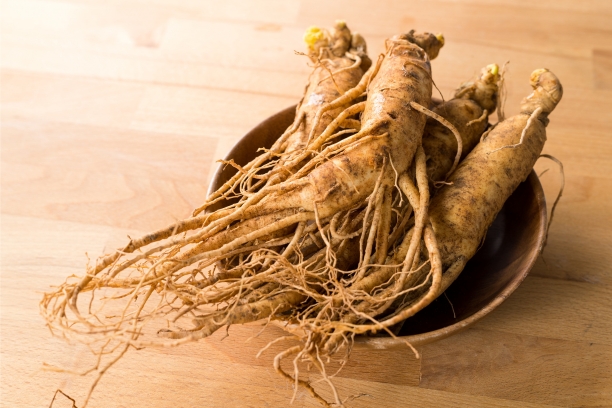
- The use of ginseng as an adaptogenic herb to support blood pressure regulation.
- Dosage and considerations when incorporating ginseng into a holistic regimen.
2 Licorice Root
- How licorice root can help raise blood pressure levels when used appropriately.
- Cautionary notes on licorice root consumption.
3 Hawthorn
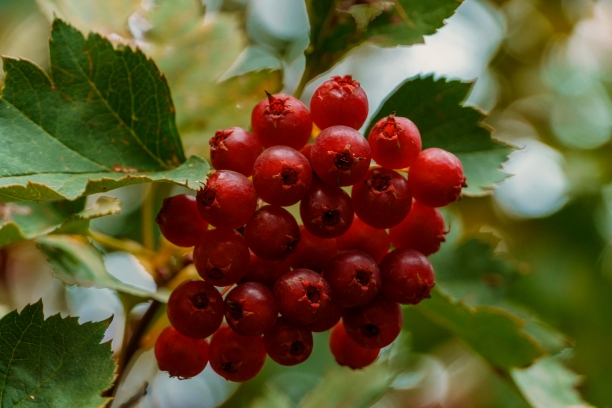
- Exploring the potential benefits of hawthorn in improving cardiovascular health.
- The role of hawthorn in Naturopathic medicine.
Nutritional Approaches
1 Salt and Fluid Intake
- Understanding the delicate balance of salt and fluid intake for individuals with low blood pressure.
- Dietary modifications to maintain optimal hydration.
2 Essential Nutrients
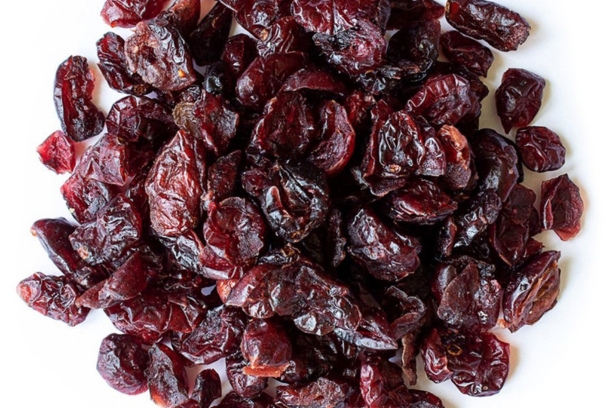
- The importance of nutrients like vitamin B12, folate, and iron in addressing low blood pressure.
- Foods rich in these nutrients and dietary recommendations.
Lifestyle Modifications
1 Dietary Patterns
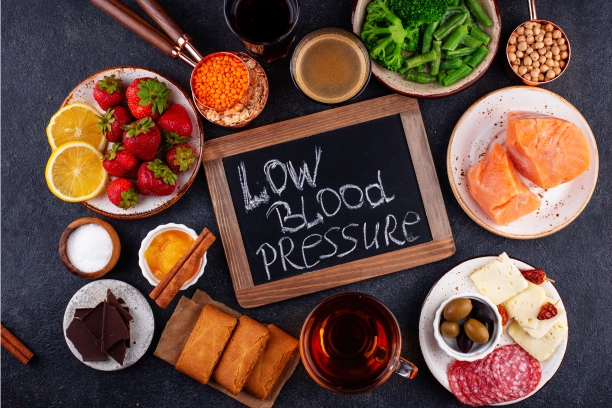
- The impact of diet on blood pressure, including the DASH (Dietary Approaches to Stop Hypertension) diet.
- Practical steps for adopting a blood pressure-friendly diet.
2 Physical Activity
- The role of regular exercise in improving circulation and blood pressure.
- Safe and effective exercise routines for individuals with low blood pressure.
3 Stress Management

- Techniques such as mindfulness, meditation, and yoga for stress reduction.
- How stress management contributes to blood pressure stability.
Acupuncture and Traditional Chinese Medicine (TCM)
1 Acupuncture Points
- Specific acupuncture points used in TCM to address low blood pressure.
- The philosophy behind acupuncture and its effects on the body’s energy flow.

2 Chinese Herbal Medicine
- An overview of herbal formulations used in TCM for hypotension.
- Combining acupuncture and herbal treatments for holistic care.
Mind-Body Practices
1 Biofeedback

- How biofeedback techniques can help individuals learn to regulate blood pressure.
- Biofeedback devices and their applications.
2 Hypnotherapy
- The use of hypnotherapy to address underlying causes of low blood pressure.
- Hypnotherapy as a tool for behavior modification.

Meditation Techniques for Blood Pressure Management
1 Mindfulness Meditation
- Understanding the principles of mindfulness meditation and its impact on stress reduction.
- Step-by-step instructions for practicing mindfulness meditation.
2 Transcendental Meditation (TM)

- Exploring the benefits of TM, including its potential to lower blood pressure.
- Learning about TM’s unique approach and techniques.
3 Guided Meditation
- The role of guided meditation in promoting relaxation and blood pressure stability.
- Accessing guided meditation resources for daily practice.
4 Yoga Nidra
- How Yoga Nidra induces deep relaxation and reduces stress.
- Practicing Yoga Nidra for blood pressure management.

5 Deep Breathing Meditation
- The connection between controlled deep breathing and blood pressure regulation.
- Deep breathing exercises and their incorporation into meditation.
6 Progressive Muscle Relaxation
- Utilizing progressive muscle relaxation to release physical tension and lower stress.
- A step-by-step guide to progressive muscle relaxation.
7 Loving-Kindness Meditation (Metta)
- The role of Metta meditation in cultivating positive emotions and reducing negative ones.
- Incorporating Metta meditation into your daily routine.
Meditation and Blood Pressure: Scientific Insights
Scientific studies have demonstrated the effectiveness of meditation in blood pressure management. These studies suggest that regular meditation practice can lead to:
- Lowered Stress Hormones: Meditation reduces the production of stress hormones, such as cortisol, which can contribute to elevated blood pressure.
- Relaxed Blood Vessels: Meditation induces a state of relaxation, leading to the dilation of blood vessels and improved blood flow.
- Reduced Anxiety: Meditation helps alleviate anxiety, a common contributor to high blood pressure.
- Enhanced Heart Health: Meditation has been associated with improved heart health and a reduced risk of cardiovascular disease.
Integrating Meditation into Your Routine
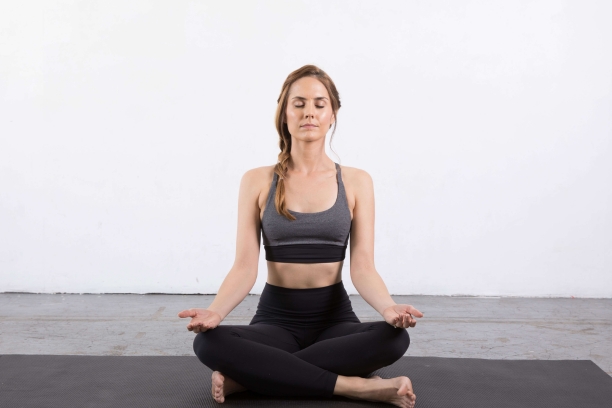
To harness the benefits of meditation for blood pressure management, consider the following:
- Consistency: Regular practice is key to reaping the rewards of meditation. Aim for daily sessions, even if they are short.
- Guidance: If you are new to meditation, consider seeking guidance from a meditation instructor or using meditation apps and online resources.
- Patience: The benefits of meditation may take time to manifest fully. Be patient with yourself and your progress.
- Complementarity: Meditation can be a valuable complement to other lifestyle changes and medical interventions. Consult with a healthcare professional to develop a comprehensive plan for blood pressure management.
Yogasanas for Blood Pressure Regulation
1 Tadasana (Mountain Pose)
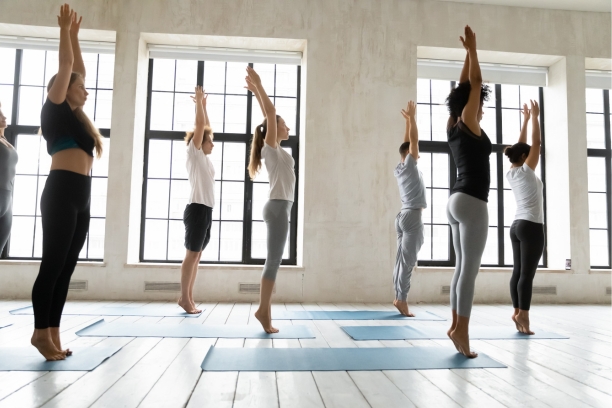
- How Tadasana promotes a balanced flow of energy and circulation.
- Step-by-step instructions for practicing Tadasana.
2 Vrikshasana (Tree Pose)

- The grounding and stability offered by Vrikshasana.
- Modifications for beginners and advanced practitioners.
3 Bhujangasana (Cobra Pose)

- How Bhujangasana stimulates the cardiovascular system.
- Precautions and variations of Cobra Pose.
4 Salabhasana (Locust Pose)

- The benefits of Salabhasana in strengthening the back and improving blood flow.
- Guidelines for practicing Locust Pose safely.
5 Ustrasana (Camel Pose)

- Exploring the heart-opening qualities of Ustrasana.
- Contraindications and modifications for this pose.
6 Virabhadrasana II (Warrior II)

- How Virabhadrasana II promotes balance and concentration.
- Aligning the body for proper execution of Warrior II.
7 Ardha Chandrasana (Half Moon Pose)

- Balancing and expanding the inner and outer energies in Ardha Chandrasana.
- Preparatory poses and variations.
8 Setu Bandhasana (Bridge Pose)
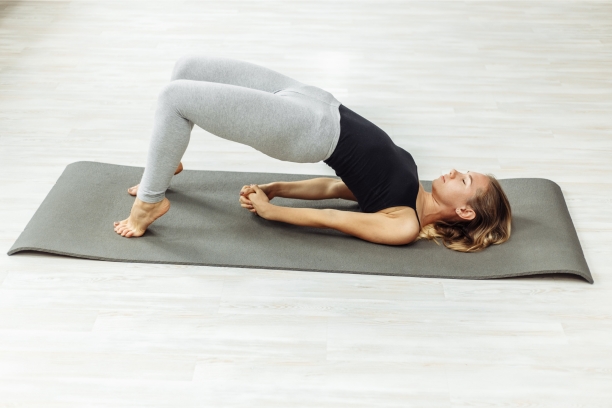
- The role of Setu Bandhasana in strengthening the spine and improving blood circulation.
- Using props to enhance your Bridge Pose practice.
9 Dhanurasana (Bow Pose)
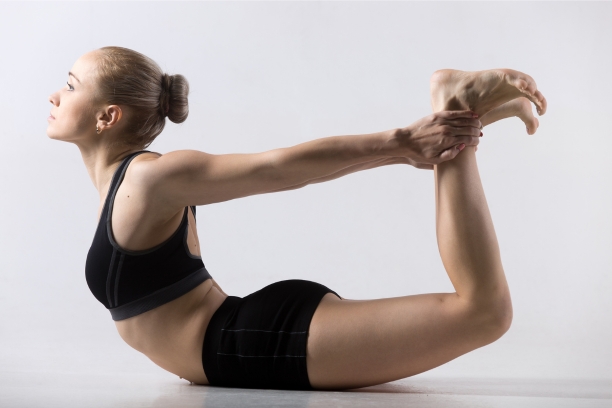
- Exploring the energizing and heart-opening qualities of Dhanurasana.
- Tips for achieving a graceful Bow Pose.
Pranayama for Blood Pressure Balance
1 Anulom Vilom Pranayama
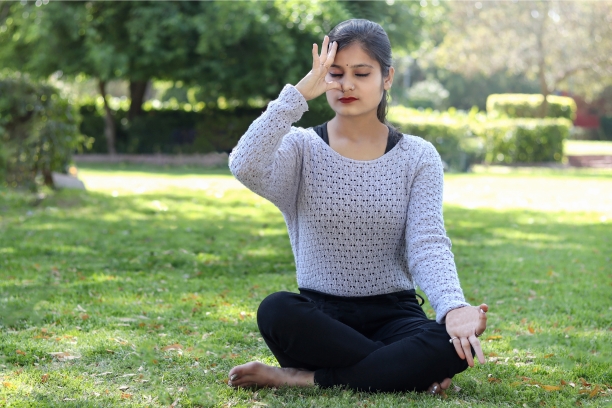
- The calming and balancing effects of Anulom Vilom on the nervous system.
- A step-by-step guide to practicing this pranayama technique.
2 Surya Bhedi Pranayama
- How Surya Bhedi Pranayama stimulates energy and warmth.
- Instructions for incorporating Surya Bhedi into your daily routine.
3 Kapalbhati Pranayama

- Kapalbhati Pranayama’s role in oxygenating the body and mind.
- Precautions and variations for Kapalbhati.
4 Bhastrika Pranayama
- The invigorating effects of Bhastrika Pranayama on circulation.
- Gradual progression and safety measures.
5 Chandrabhedi Pranayama

- Balancing the lunar energies with Chandrabhedi Pranayama.
- Combining lunar and solar pranayamas for equilibrium.
Mudras for Blood Pressure Harmony
1 Gyan Mudra

- The symbolism and practice of Gyan Mudra for mental clarity and balance.
- How Gyan Mudra can complement your yoga practice.
2 Vayu Mudra

- Utilizing Vayu Mudra to regulate the flow of prana (life force) in the body.
- Step-by-step instructions for practicing Vayu Mudra.
Meditation and Relaxation
1 Meditation Techniques
- The calming and centering effects of meditation on blood pressure.
- Guided meditation practices for hypertension management.
2 Shirodhara Therapy

- Exploring the therapeutic benefits of Shirodhara, a form of Ayurvedic meditation.
- How Shirodhara can induce deep relaxation and balance.
Holistic Management
1 Lifestyle Adjustments
- Incorporating yogic principles into your daily life for sustained blood pressure balance.
- Dietary considerations, sleep hygiene, and stress reduction.
2 Seek Guidance
- The importance of consulting a qualified yoga instructor or therapist for personalized guidance.
- Integrating yoga into your overall healthcare strategy.

Conclusion
Low blood pressure doesn’t have to mean a life filled with dizziness and fatigue. Naturopathic management offers a unique and holistic approach to addressing this condition, focusing on natural remedies, lifestyle changes, and mind-body practices.Low blood pressure, while often overlooked, is a condition with multiple underlying causes and a range of distressing symptoms.Yogic management for low blood pressure offers a holistic approach to balancing your inner flow.
